Queen Victoria
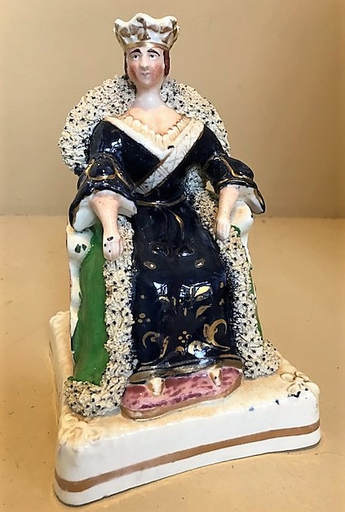
The year 2019 marks the 200th anniversary of the birth of Queen Victoria who was potted in many forms by the Staffordshire potters. It therefore seems entirely appropriate for us to start this year with a figure of the Queen as our Figure of the Month.
Victoria (Alexandrina Victoria; 24 May 1819 – 22 January 1901) was Queen of the United Kingdom of Great Britain and Ireland from 20 June 1837 until her death. On 1 May 1876, she adopted the additional title of Empress of India.
Victoria was the daughter of Prince Edward, Duke of Kent and Strathearn, the fourth son of King George III. Both the Duke and the King died in 1820, and Victoria was raised under close supervision by her mother, Princess Victoria of Saxe-Coburg-Saalfeld. She inherited the throne at the age of 18, after her father’s three elder brothers had all died, leaving no surviving legitimate children. The United Kingdom was already an established constitutional monarchy, in which the sovereign held relatively little direct political power. Privately, Victoria attempted to influence government policy and ministerial appointments; publicly, she became a national icon who was identified with strict standards of personal morality.

Victoria married her first cousin Prince Albert of Saxe-Coburg and Gotha in 1840. Their nine children married into royal and noble families across the continent, tying them together and earning her the sobriquet “the grandmother of Europe”. After Albert’s death in 1861, Victoria plunged into deep mourning and avoided public appearances. As a result of her seclusion, republicanism temporarily gained strength, but in the latter half of her reign, her popularity recovered. Her Golden and Diamond Jubilees were times of public celebration.
Her reign of 63 years and seven months was longer than that of any of her predecessors and is known as the Victorian era. It was a period of great industrial, cultural, political, scientific, and military change within the United Kingdom and was marked by great expansion of the British Empire.
More Figures of the month

Edward Morgan and Jenny Jones
This is a rare pair of figures portraying Edward Morgan and Jenny Jones, titled with gilt script. The romantic tale of Morgan and Jones was set to music in 1825 by Charles James Mathews.
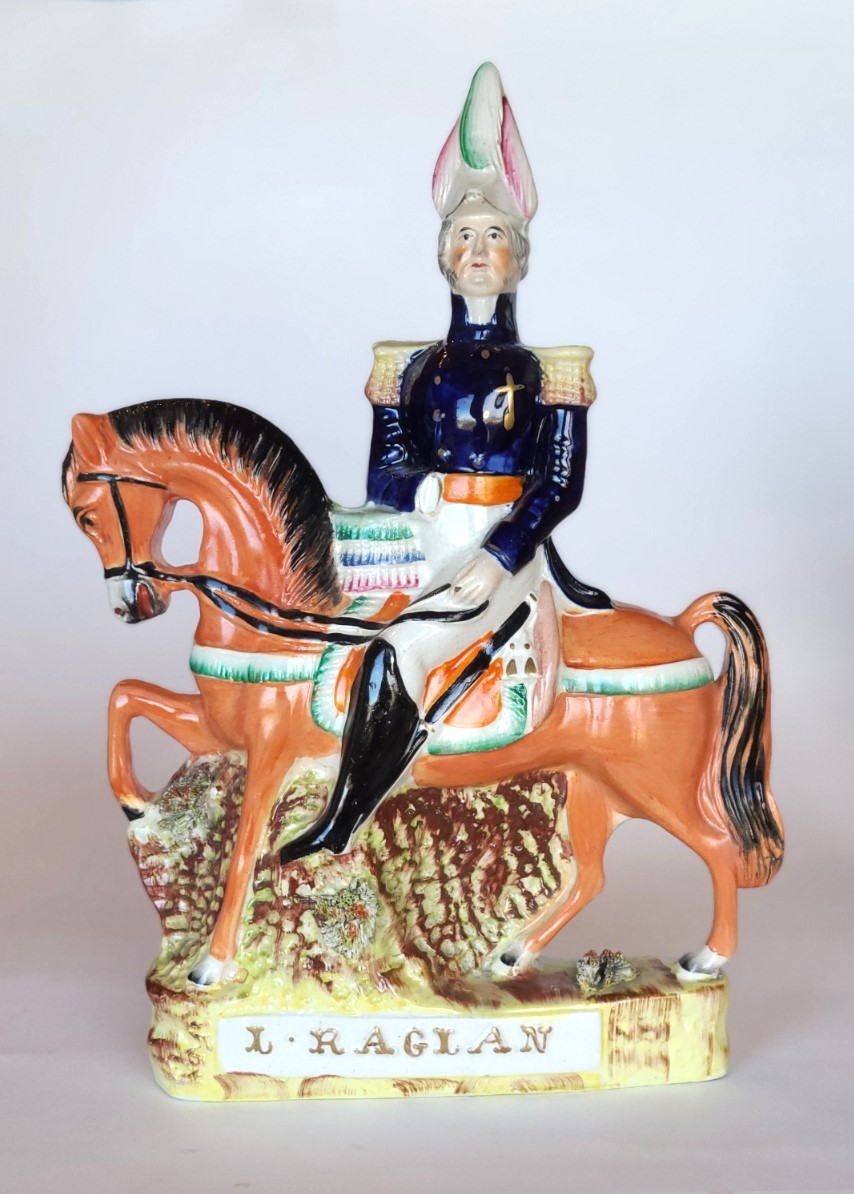
Field Marshal Fitzroy Raglan
This is a rare figure of Field Marshal Fitzroy Raglan. The figure stands about 12 1/4” tall and dates to about 1854.
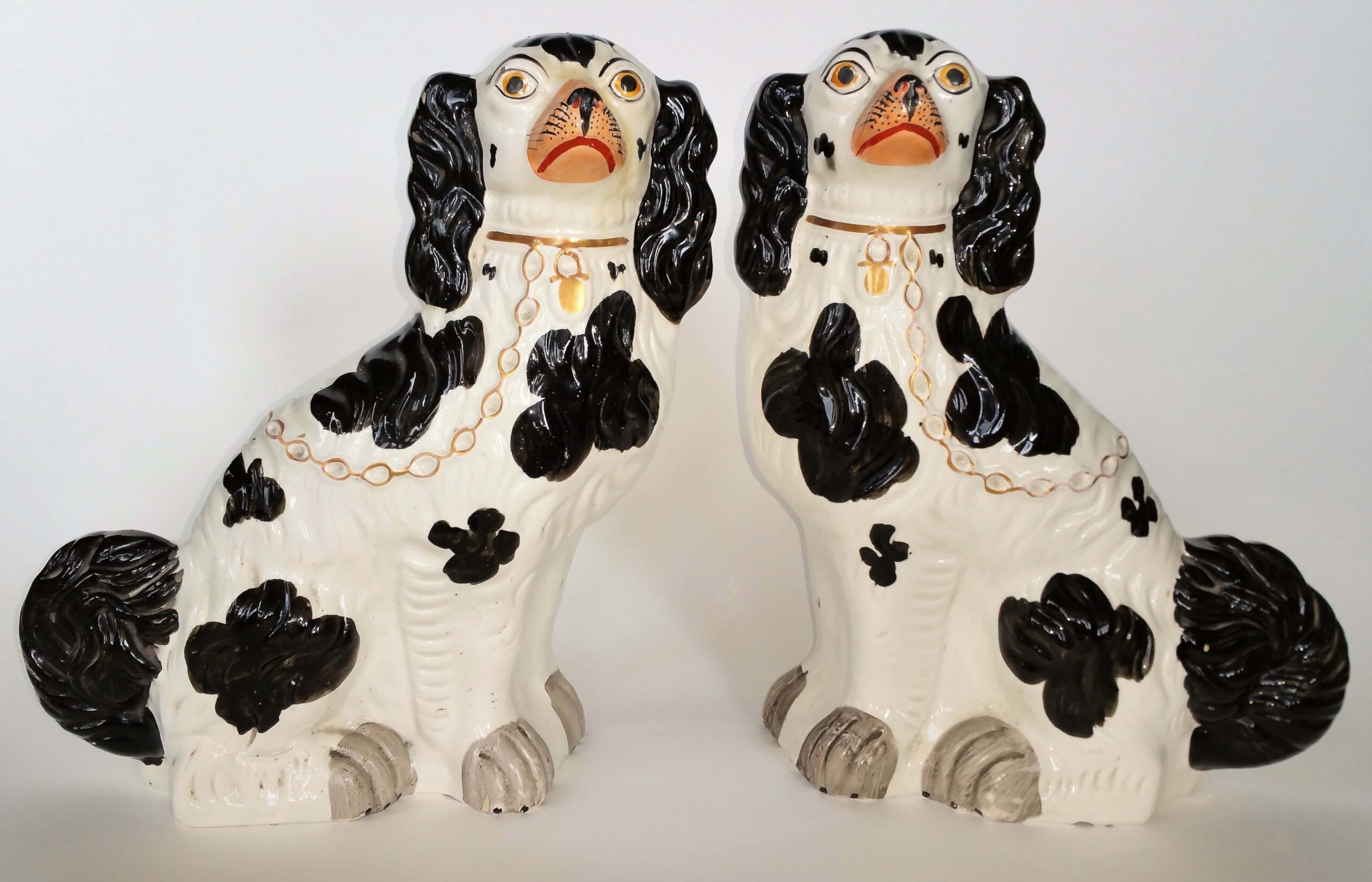
Black and white spaniels
This is fine pair of #1 black and white Staffordshire spaniels. They have a raised number one on the underside, designating them as the largest in a series of six sizes, number six being the smallest.
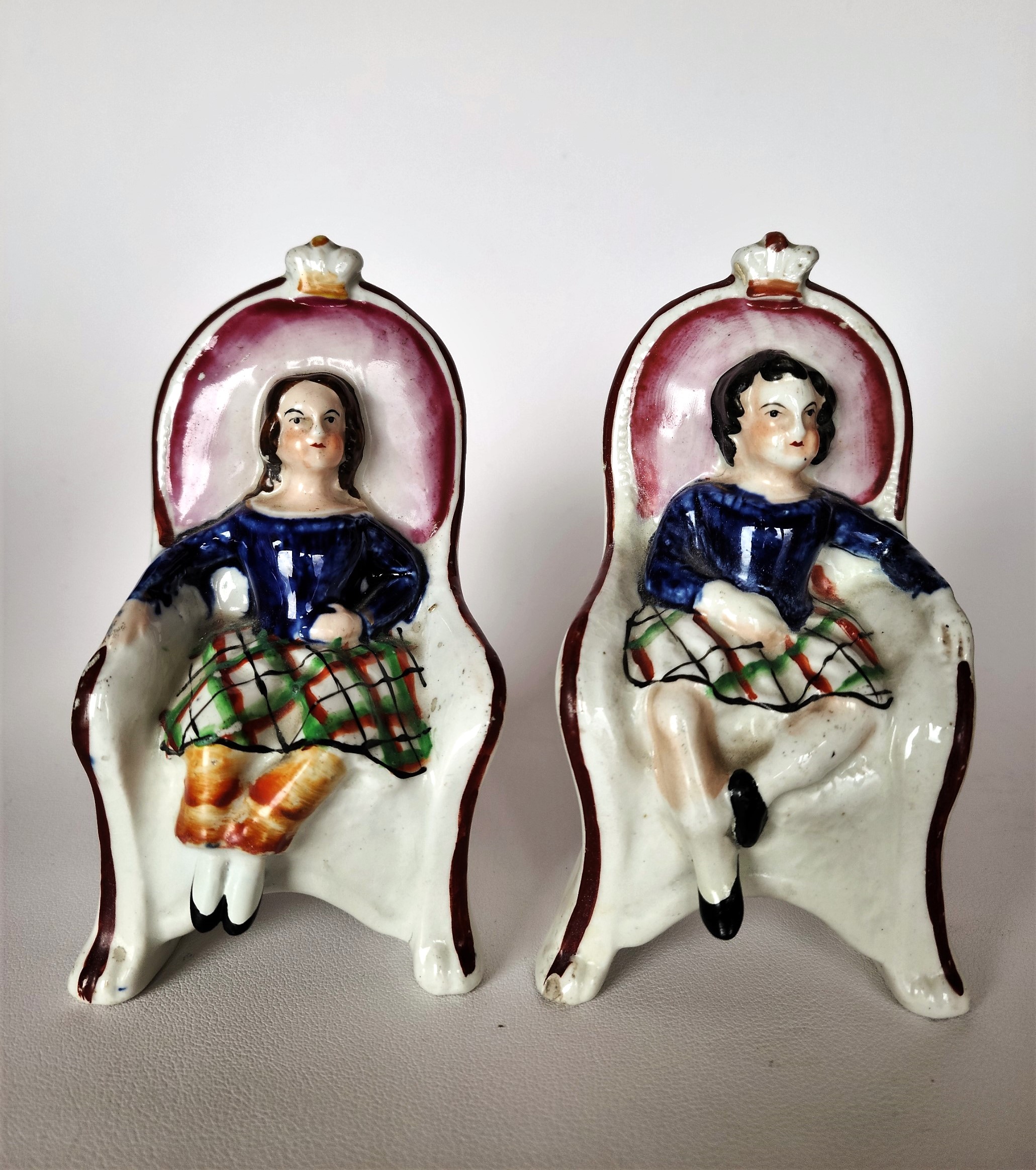
Royal children seated
This is a very rare pair of Staffordshire figures representing the Princess Royal and the Prince of Wales, seated in chairs. Each figure is approximately 5” tall and dates to about 1845.
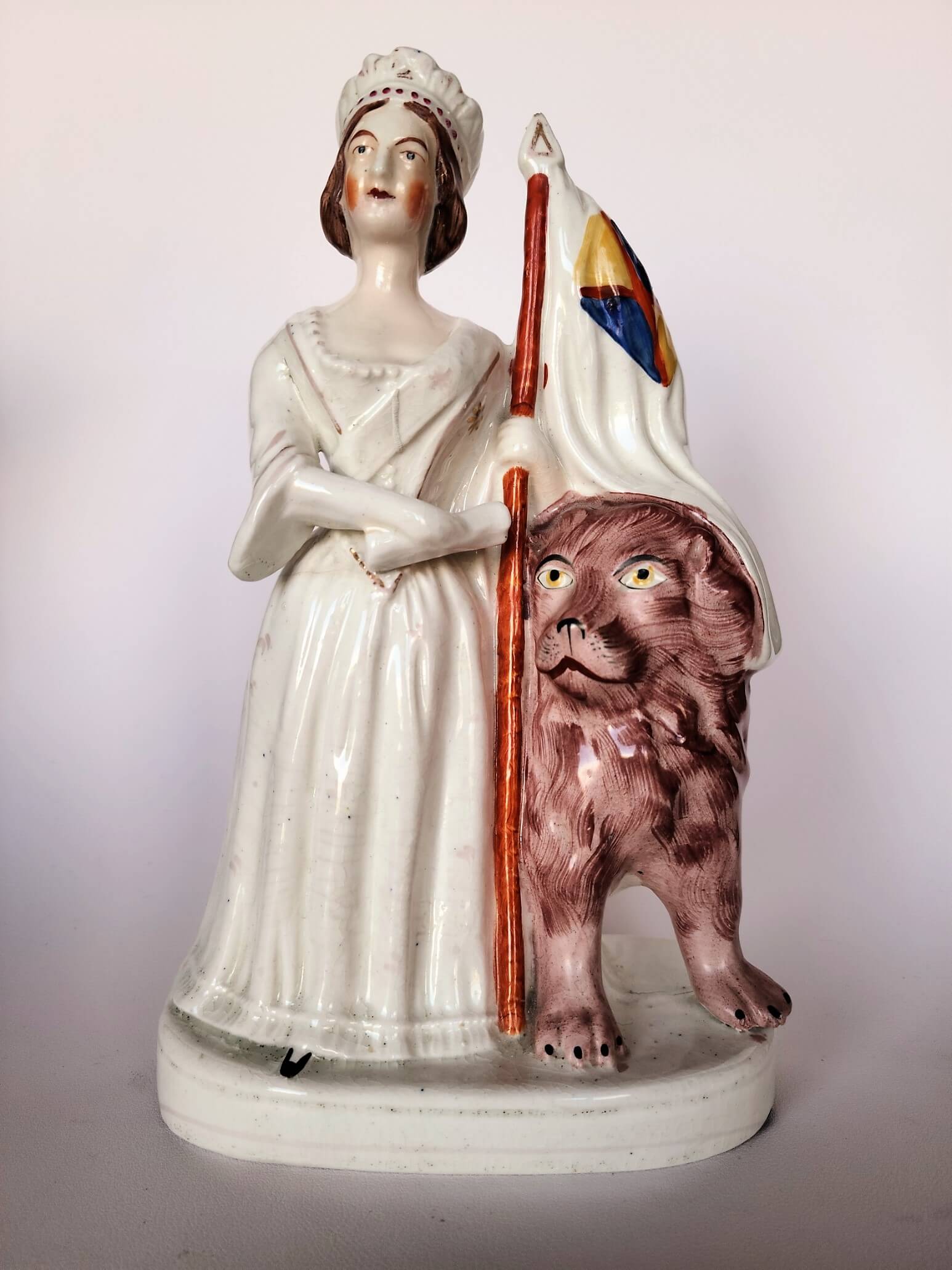
Queen Victoria
This is a rare Staffordshire figure of Queen Victoria, standing 8 3/4” tall and dating to approximately 1855. The Queen stands holding the staff of a flag in her left hand and a scroll in her right hand.

Victor Emmanuel II
This is a rare Staffordshire military figure of Victor Emmanuel II, standing 17” tall, dating to approximately 1855. It is titled in gold, raised capital letters, “KING OF SARDINIA”.
Membership
We warmly welcome new members – join us for free!
Wherever you are in the world, whether you are an experienced collector, a researcher interested in the folk art of England, or just someone who is intrigued by Staffordshire figures, please join us and get the rest of this year for free! Stay with us next year and pay an annual fee of £45 / $50 per household in January.


